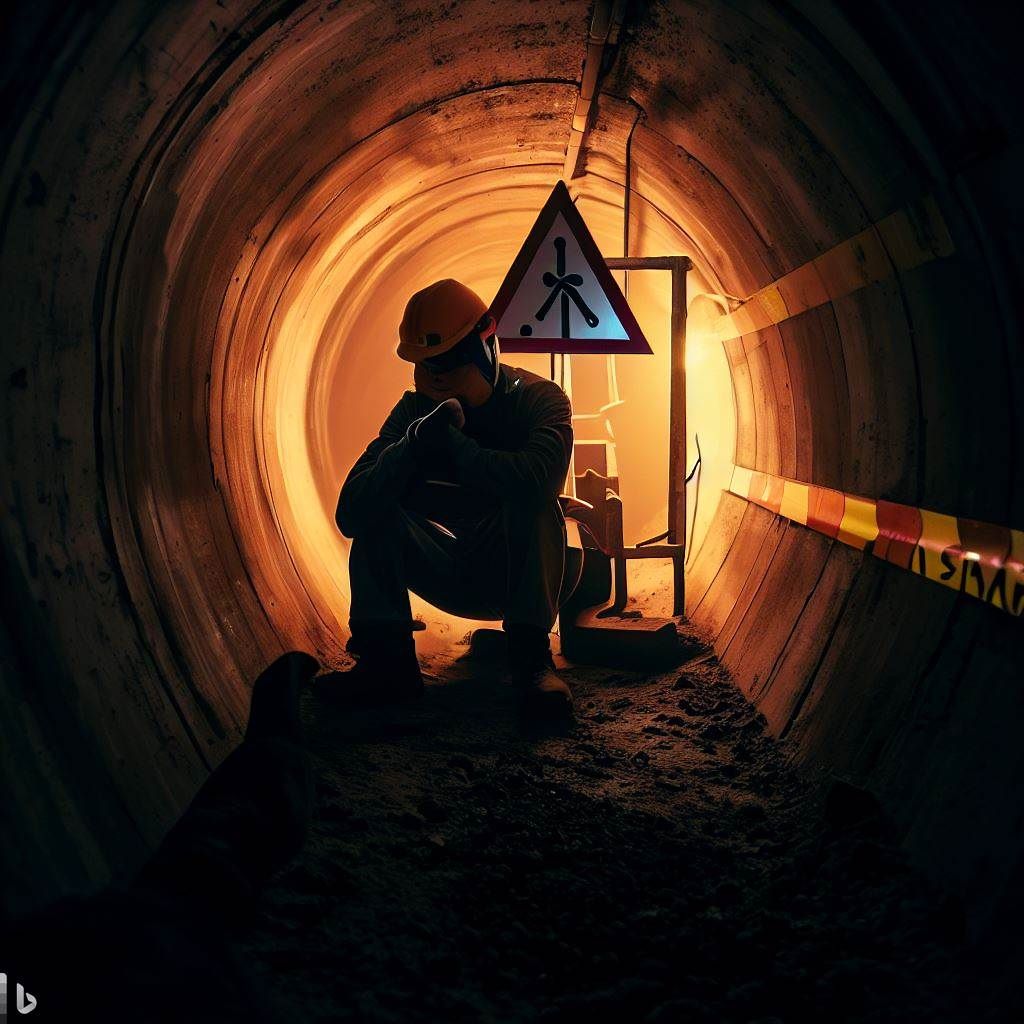Confined Space vs. Restricted Space: Understanding the Key Differences for Workplace Safety
In the world of workplace safety, understanding the differences between confined spaces and restricted spaces is crucial. Each type of space has its own set of hazards and safety requirements, and failure to recognize those differences can lead to injury, illness, or even death.
This article will delve into the key differences between confined and restricted spaces, the associated dangers, the regulations and guidelines governing them, and best practices for ensuring safety in both spaces.
As a safety professional or a worker, it is essential to be familiar with these terms and concepts to create and maintain a safe working environment. Whether you are a manager responsible for employee safety, a worker who encounters these spaces daily, or simply interested in learning more about workplace safety, this article will provide valuable information and guidance.
Defining confined space
A confined space is an area that has limited or restricted means for entry and exit, is not designed for continuous occupancy, and is large enough for a person to enter and perform work. Some examples of confined spaces include storage tanks, silos, vats, pits, manholes, tunnels, and pipelines. These spaces may have poor ventilation, limited access points, or difficult entry and exit routes, making them hazardous for workers.
There are three main characteristics that define a confined space:
- The space has limited or restricted openings for entry and exit.
- The space is not designed for continuous human occupancy.
- The space is large enough for a person to enter and perform work.
It is important to note that while confined spaces may be uncomfortable or challenging to work in, they are not inherently dangerous; however, when additional hazards are present within the space, such as hazardous substances, mechanical hazards, or the potential for engulfment, the risks associated with working in a confined space increase significantly.

Defining restricted space
A restricted space is an area that has limited access or egress due to its design, location, or the presence of hazards. Restricted spaces are not necessarily small or enclosed, but they may have physical barriers or limitations that make them difficult to enter or exit. Examples of restricted spaces include trenches, crawl spaces, and areas with low ceilings, narrow passageways, or tight corners.
Restricted spaces can pose various hazards for workers, such as difficulty in evacuating during an emergency, physical strain from working in cramped or uncomfortable positions, and the risk of injury from falls or entrapment. Unlike confined spaces, restricted spaces are not defined by specific criteria and may vary depending on the workplace and the hazards present.
Key differences between confined space and restricted space
The primary differences between confined and restricted spaces lie in their definitions and the hazards they pose. While both types of spaces have limited access, confined spaces are specifically defined by their limited openings for entry and exit, lack of continuous occupancy, and ability to accommodate a person performing work. On the other hand, restricted spaces are characterized by their physical barriers or limitations that hinder access or egress.
The hazards associated with confined spaces may include poor ventilation, hazardous substances, or the potential for engulfment, while restricted spaces present risks such as difficulty in evacuating during an emergency, physical strain, and the risk of injury from falls or entrapment. Identifying and addressing these hazards is essential to maintain a safe working environment in confined and restricted spaces.
Dangers associated with confined spaces
Confined spaces can pose a variety of dangers for workers, including:
- Atmospheric hazards: Poor ventilation in confined spaces can lead to a buildup of hazardous gases, vapors, or dust, which can be toxic, flammable, or oxygen-deficient. Inadequate oxygen levels can cause asphyxiation, while exposure to toxic substances can lead to acute or chronic health effects.
- Engulfment: Workers in confined spaces may risk being engulfed by loose materials, such as sand, grain, or other bulk substances, which can quickly fill the space and trap or suffocate the worker.
- Mechanical hazards: Moving equipment, such as conveyor belts or rotating machinery, can pose risks for workers in confined spaces, especially if they are difficult to see or access. In addition, workers may be at risk of injury from falling objects or equipment.
- Fire and explosion hazards: The presence of flammable substances or the potential for ignition can create a risk of fire or explosion in confined spaces, especially if there is limited ventilation or means of escape.
- Physical hazards: Confined spaces may be difficult to enter and exit, and workers may be at risk of injury from slips, trips, or falls, as well as strains or sprains from working in awkward positions.
Dangers associated with restricted spaces
Restricted spaces can also pose hazards for workers, including:
- Difficulty in evacuating: In the event of an emergency, workers in restricted spaces may have difficulty evacuating due to limited access or egress routes. This can be especially dangerous if there is a fire, explosion, or release of hazardous substances.
- Physical strain: Working in restricted spaces can be physically demanding, as workers may be required to bend, twist, or contort their bodies to fit into tight spaces or navigate narrow passageways. This can lead to discomfort, fatigue, and an increased risk of injury.
- Injury from falls or entrapment: Workers in restricted spaces may be at risk of injuries from falls, such as falling from a ladder or scaffolding or becoming trapped between objects or equipment.
Regulations and guidelines for confined space vs. restricted space
Specific regulations and guidelines are in place to ensure workers’ safety in confined and restricted spaces. In the United States, the Occupational Safety and Health Administration (OSHA) sets forth standards for confined spaces under 29 CFR 1910.146, which outlines the requirements for employers to identify and control hazards in these spaces.
This includes implementing a confined space program, which involves developing procedures for safe entry, training employees, and providing necessary equipment and protective gear. While no specific federal regulations exist for restricted spaces, OSHA provides guidelines for working safely in these areas.
Employers are encouraged to identify potential hazards in restricted spaces and take steps to eliminate or control them, such as providing adequate lighting, ventilation, and protective equipment.
In addition to federal regulations, state and local regulations may apply to confined and restricted spaces. Employers should know these regulations and ensure they comply with all applicable requirements.
Confined space and restricted space training for employees
Providing adequate employee training is one of the most important aspects of ensuring safety in confined and restricted spaces. Workers who enter these spaces must be aware of the hazards present and know how to protect themselves and their coworkers.
Training for confined spaces should include the following:
- Identification of confined spaces and potential hazards
- Proper procedures for entering, working in, and exiting confined spaces
- Use of personal protective equipment, including respiratory protection, fall protection, and confined space entry equipment
- Hazard communication and chemical exposure monitoring
- Emergency procedures, including rescue and first aid
Training for restricted spaces should cover similar topics, including hazard identification and protection measures. Workers should be trained to recognize potential hazards in restricted spaces, such as lack of oxygen, exposure to hazardous substances, and physical strain.

Best practices for workplace safety in confined and restricted spaces
In addition to training employees, there are several best practices that can help ensure safety in both confined and restricted spaces:
- Conduct a thorough hazard assessment before entering any confined or restricted space. Identify potential hazards and develop procedures for controlling or eliminating them.
- Develop a confined or restricted space program that includes procedures for safe entry, employee training, and equipment and protective gear.
- Provide necessary equipment and protective gear, such as respirators, fall protection, and confined space entry equipment.
- Ensure that all workers entering confined or restricted spaces are properly trained and equipped.
- Monitor the atmosphere in confined spaces for hazardous gases or vapors, and ventilate the space if necessary.
- Establish a system for communication between workers inside and outside the confined or restricted space.
- Have a rescue plan in place in case of an emergency, and train workers on emergency procedures.
Conclusion: Ensuring safety in confined and restricted spaces
In conclusion, understanding the differences between confined spaces and restricted spaces is essential for maintaining a safe working environment. Both types of spaces pose unique hazards and require specific safety measures to protect workers.
By following best practices for workplace safety, providing adequate training and equipment, and complying with regulations and guidelines, employers can help ensure the safety of workers in confined and restricted spaces. Safety should always be the top priority in any workplace, and proper planning and preparation can prevent accidents and injuries.
Frequently Asked Questions:
Q: What is the main difference between confined and restricted spaces?
A: Confined spaces are defined by specific criteria, including limited means of entry and exit and lack of continuous occupancy. Restricted spaces, on the other hand, may have physical barriers or limitations that hinder access or egress.
Q: What are some common hazards associated with confined spaces?
A: Atmospheric hazards, engulfment, mechanical hazards, fire, and explosion hazards, and physical hazards are all potential risks in confined spaces.
Q: What are some best practices for ensuring safety in confined and restricted spaces?
A: Conduct a thorough hazard assessment, develop a safety program, provide necessary equipment and training, monitor the atmosphere, establish communication, and have a rescue plan in place.
Q: Are there specific regulations for working in confined spaces and restricted spaces?
A: Yes, OSHA sets forth standards for confined spaces under 29 CFR 1910.146 and provides guidelines for working safely in restricted spaces. State and local regulations may also apply.
